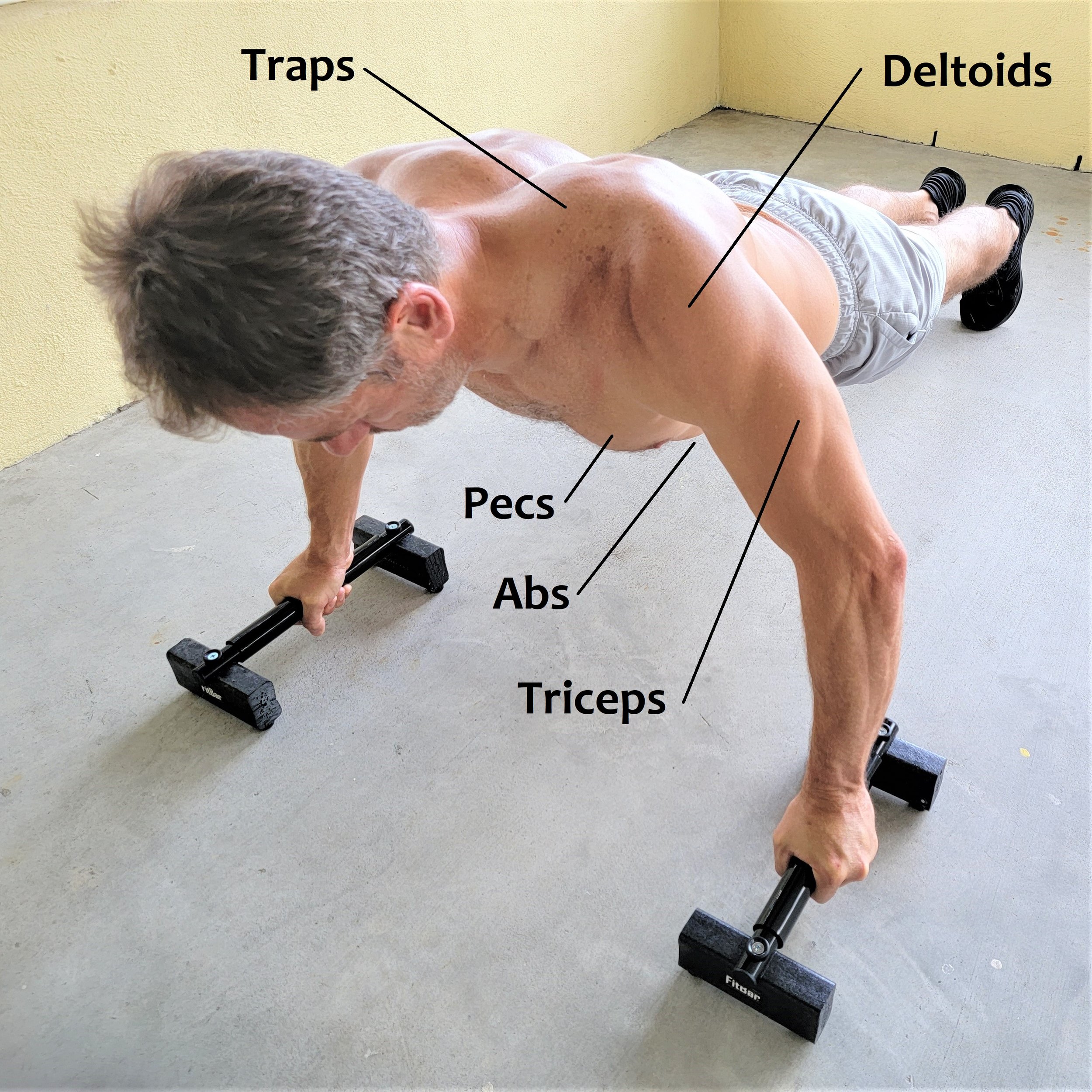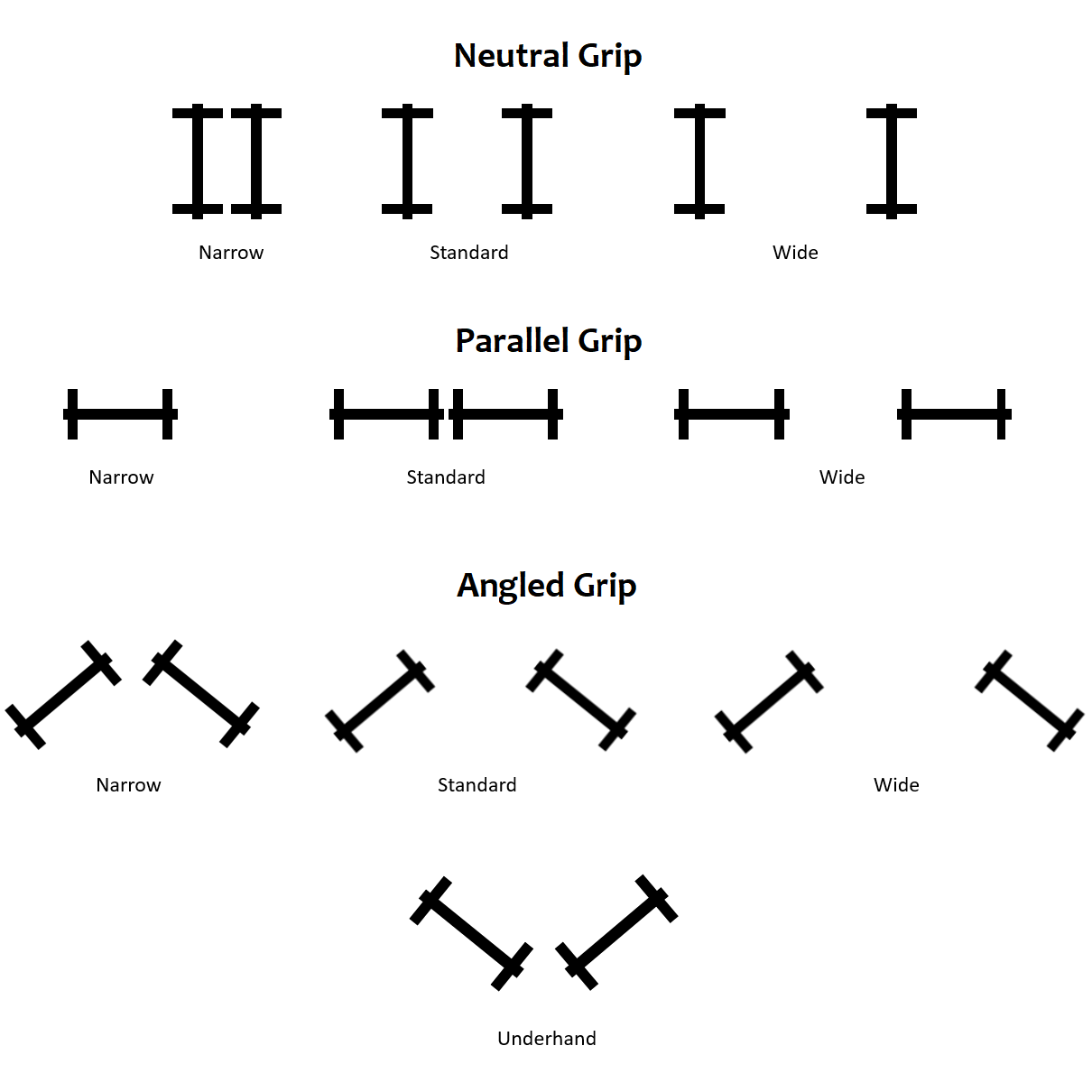Introduction
Pushups are a fundamental bodyweight exercise. For decades, the Army used standard pushups as part of their fitness tests, which have recently been replaced by the more comprehensive Army Combat Fitness Test (ACFT) (which now requires a hand release when doing pushups!). There are numerous pushup variations. On the easier / beginner end of the scale, there are:
kneeling pushups,
wall pushups, and
incline pushups (pushups with your hands on a bench and feet on the floor).
On the tougher / advanced end of the scale, there are:
decline pushups (pushups with your hands on the floor and feet on a bench),
handstand pushups (vertical and upside down), and
plyo pushups (hand clap pushups).
In the middle are standard pushups, which are the pushups most gym goers / people looking to get / stay fit are doing.
But there are many variations to the even the standard pushups. So many that one could wonder what pushup or pushup variations should you be doing? And what muscles are being worked by the various pushup variations? In this article we provide suggested answers to these questions.
Should you use pushup bars?
This is a fundamental question you will need to address, and there is both research and anecdotal evidence to support pushups with and without pushup bars. The arguments against include: putting your hand directly on the ground engages your hand, and engages your finger muscles to work as stabilizers. The argument for using pushup bars: the outstretched fingers and palms can possibly put strain on your wrists. One statement of fact is that, when using pushup bars, you have more range of motion (you can go farther down) to further engage your triceps and your deltoids. You also have a greater range of hand position with pushup bars (easier to go underhand). For this article we focus on pushups performed with pushup bars. We believe it is the better way to do a pushup, and there are variations that can ONLY be done with pushup bars.
Muscles used doing pushups
Pushups are commonly associated with building the chest muscles, i.e., the pectoralis major and the pectoralis minor, as well as the shoulder muscles, i.e. the anterior deltoid. Back muscles are also engaged, mostly the trapezius. The triceps are also engaged, depending on hand position. And since you are maintaining your plank, your gluteus maximus (glutes), rectus abdominus (abs), and quadriceps (quads) will be engaged. It appears that any of the pushups listed below will engage all the aforementioned muscles, however, some hand position will drive which muscles are most engaged. For instance, when your hands are closest to your body, such as a diamond pushup and especially the underhand pushup, the triceps are more engaged. The American Council on Exercise (ACE) reports that a wide hand position will engage the shoulders more. It is our opinion that a neutral grip will lessen the engagement of the shoulder, regardless of the hand width (helpful if you have any type of shoulder injury).
Pushup hand position
This is the bulk of this post. We describe 10 different pushup hand positions using pushup bars that will work different muscles. These are almost all overhand, with a single underhand position. We further divide into parallel, angled, and neutral grip (angle of pushup bar). Finally, we divide into the spacing between the pushup bars – narrow, standard (hands below the shoulders), and wide.
Standard Pushup
Standard pushups can be performed as either parallel or neutral hand position, or really any angle between. Both neutral and a 45-degree angle seems to be the most comfortable to the author. Just try different positions and listen to your body.
Triceps Pushups
Keeping your hands close to your body seems concentrate more of the effort on your triceps. You can your hands close (narrow) with in both parallel and neutral hand positions. The benefit of the FitBar FP-9 Pushup Bars is that you can get both hands REALLY close on a single bar. This emulates the diamond pushup, where both your hands are close and your fingers / thumbs create a diamond.
The underhand pushup (reverse grip pushup) is much easier with pushup bars, and they also work your triceps. In fact, without pushup bars, the wrist is at a pretty extreme angle. Some people also call these biceps pushups, but the motion doesn’t seem to really work your biceps like a biceps curl.
Wide Grip Pushups
Wide grip pushups can be performed with in both parallel and neutral hand positions. Make sure when using pushup bars, they will not slide out, like the FitBar FP-9 which has grippy rubber feet. Also, since your hands are wide, you will have less range of motion than a standard pushup. The extra height when using pushup bars allows you to get deeper to compensate. Make sure you listen to your body, and ensure your shoulders are not in pain. We recommend starting at slightly wider than a standard grip, and slowly move the pushup bars outward with successive workouts until your upper body can handle the extra effort required.
Maintain good form
Like any exercise, maintaining good form will help you maximize the gains from the exercise. Keeping a good plank position is key, and your butt should not be sticking up (unless you are doing a pike pushup). Engage your core, glutes, and quads to maintain the plank. You should be looking at the floor, not looking forward, otherwise you can strain your neck. Move in a controlled way, all the way up, all the way down. Think about how fast you should go, and go just a tad slower to maintain control.
Closing thoughts
As with any fitness tips, we recommend that you considering using a fitness professional (trainer, doctor, etc) to get the best advice. We have just provided our perspective on what works for us, and for us, pushup bars at various positions are more comfortable than just hands on the floor. We hope that you enjoyed reading this blog post, and recommend our FP-9 Push Up Bars to supplement your pushup workouts.











